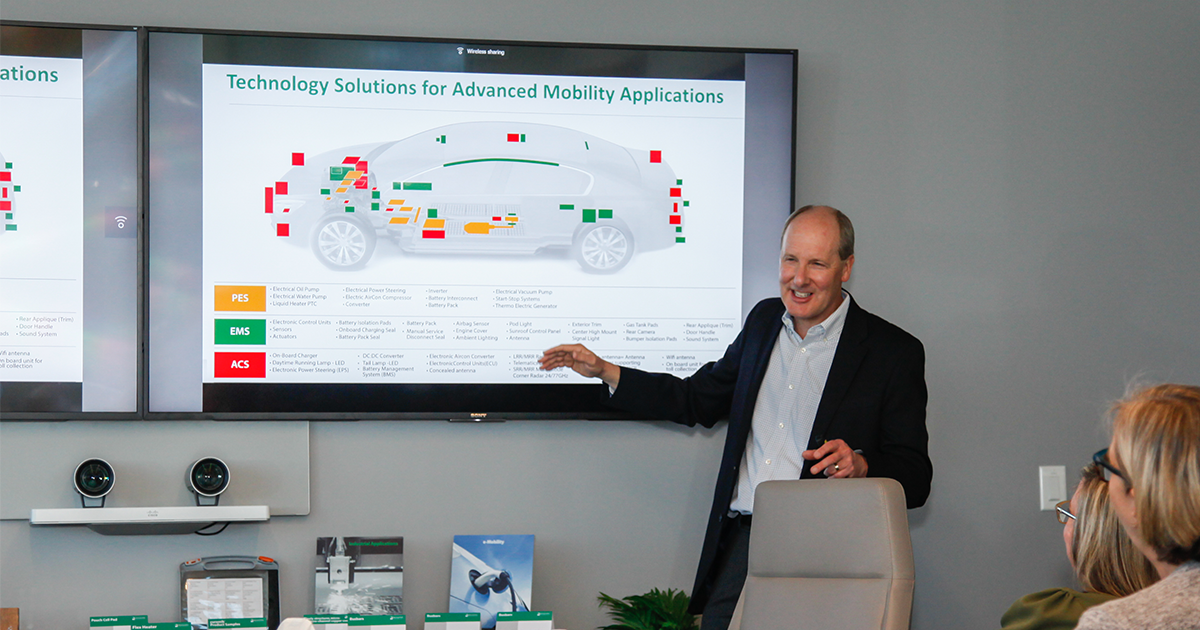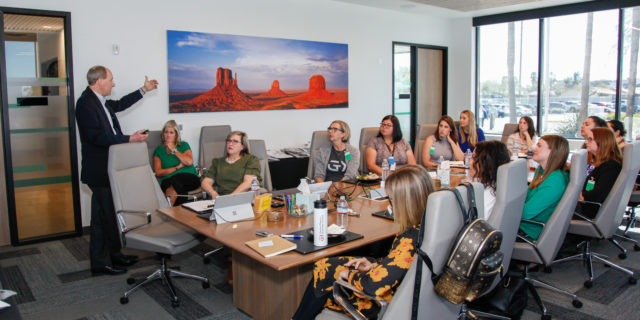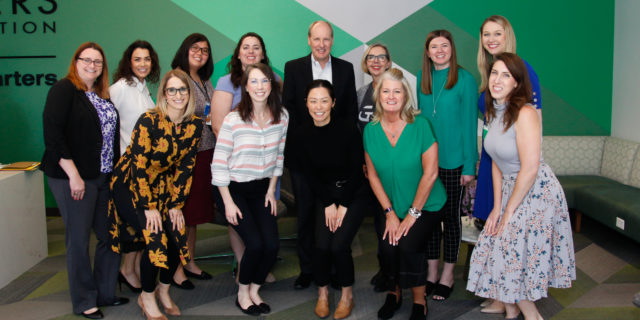

Fireside Chat: How Rogers Corporation built upon its success after a cross country relocation
Published: 03/12/2020
Moving a company across state lines, let alone across the country, is a complicated process that requires an immense amount of strategic and logistical planning. Such an endeavor can seem overwhelming, but Rogers Corporation is proof that it can be done.
Rogers Corporation had been based in Connecticut for 184 years and was a $350 million company. In 2016, the company’s leadership realized it needed to relocate its global headquarters to the West Coast in order to meet customer demands and take its growth to the next level. Greater Phoenix was the perfect fit. After a successful transition to the Copper State, the company proved it was the right move, more than doubling its revenue and ending 2019 at $879.1 million.
We spent time with Bruce Hoechner, president and CEO of Rogers Corporation, in a recent Fireside Chat where he shared what it takes for a business to thrive after relocating.
Be clear in your motives for the move
When a company is mulling over a relocation, its leadership needs to be very sure of its reasoning. A move is physically and operationally expensive, and the benefits of relocating must outweigh the costs. Leadership should ask:
- Why would moving be good for the company?
- What other options are there to solve those issues?
- What are the opportunity costs of moving?
- What are the economic benefits of moving?
When Rogers Corporation decided to move from Connecticut to Greater Phoenix, it was to solve several specific problems they identified. Hoechner shared that Rogers was in a rural area where labor pool lacked the depth of skill needed to continue its long legacy of success. Connecticut is also geographically disconnected from many of Rogers’ clients, which reside in the West Coast and China, making it difficult for physical, face-to-face meetings to occur on a regular basis.
Hoechner pointed out that the most important reason for Rogers to move was for the culture. After being in the same location since 1832, the culture within the company felt stuck. Hoechner envisioned Rogers becoming a $2 billion business and was unable to accomplish this goal remaining in Connecticut.
A relocation to Greater Phoenix would solve these problems. After announcing the move, most of the leadership team filtered themselves out. With Greater Phoenix’s world-class talent pool, Rogers didn’t miss a beat and today is able to hire and maintain the high workforce standards the company requires. It also doesn’t hurt that Arizona State University, the largest engineering school in the country, is just down the street. By being clear on the company’s specific needs and what Greater Phoenix could offer, Hoechner and his team were able to capitalize on opportunities right away to help ensure a smooth transition.
Lead with a customer-centric approach
Most people think they know their own products inside and out, but they struggle with talking about them from a customer standpoint and understanding their unique pain points.
“Knowing the product gives a business the ability to sell it,” said Hoechner. “But fundamentally understanding your customer’s needs makes you a team member with them.”
Part of rebuilding Rogers’ culture meant that they had to put a higher priority on being customer-centric and more empathetic about their customers’ needs. In some ways, understanding the customers’ needs leads to simple shifts in conversation. This could include, “you should buy this” to “here’s how using it this way can help you the most.” This enabled Rogers to become a helpful resource and demonstrate value, which in turn increased customer loyalty.
Hoechner said that throughout the relocation and since, Rogers has employed two tactics to ensure customers feel prioritized. First, everyone on every client-facing team mirrors the client. Each person at Rogers has a background in engineering. They understand engineering jargon as well as every need and concern before the client expresses it. Second, every product is built to be mission-critical. It doesn’t matter if a product is being sent into space or being used as padding in a shoe. By consistently delivering and exceeding expectations, customers knew their products could be trusted and depended on, and Rogers’ business continued to grow.
Establish trust by being a respectful business neighbor
As a business, no matter the size, engaging the customer as a neighbor leads to trust and loyalty. Whether it’s using correct dialects or respecting customs while visiting a customer, trust is gained when a company considers these steps as a priority. Rogers’ clients can feel engaged and connected to who they’re working with because Rogers’ has 10 worldwide locations.
To ensure a successful relocation, regardless of distance, companies need to pinpoint their exact motives and choose a location that supports their needs. All the while, companies should continue to put their customers first and work to strengthen relationships to increase trust and loyalty.
We are here to connect the right talent, resources and location to give you and your company the most success possible. Connect with us here to begin your journey.
Share your story here and engage with our online community of professionals on Twitter.

